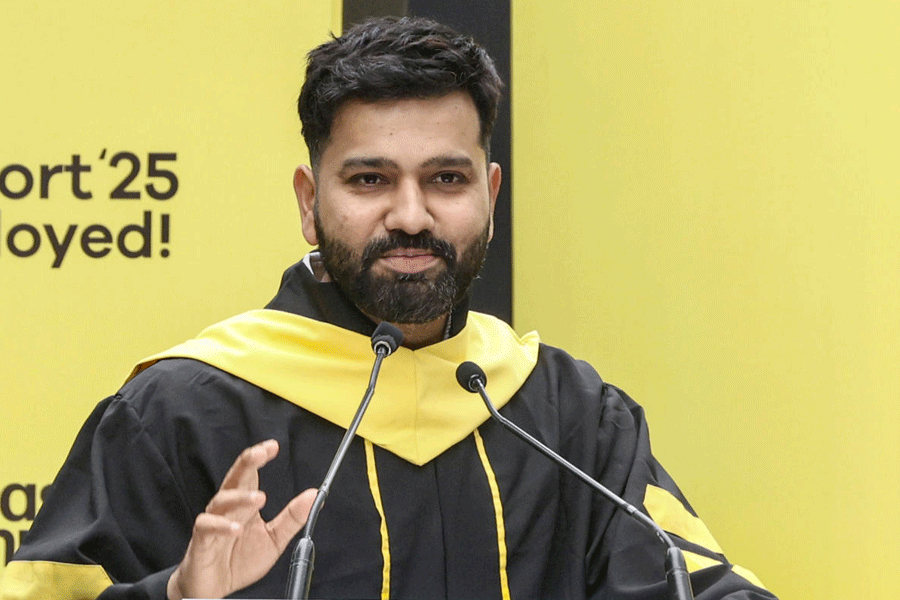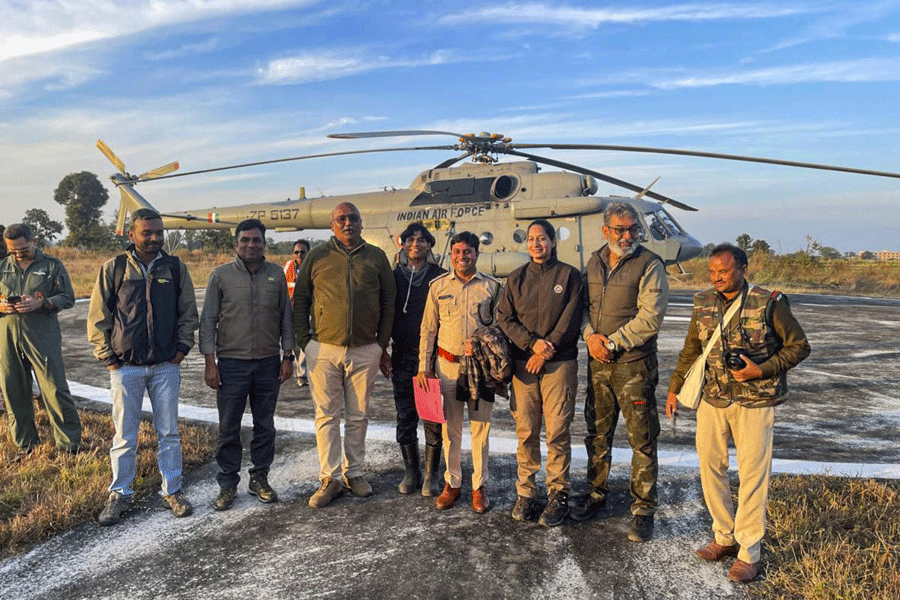 |
The king-sized thrones stand majestically on an elevated platform in the centre of the huge hall. But my attention is focused on the two plush leather chairs strategically positioned in front of a camera. Paramahamsa Nithyananda walks in and gracefully sits on one. I take the chair next to him. And the cameras start rolling.
“I don’t meet anyone without a camera anymore,” he explains. I can understand that. Two years ago, a video clip that showed him frolicking with Kannada actress Ranjitha went viral on the Internet and was telecast by several television channels. “They were morphed videos,” he says. “Even Ranjitha has repeatedly claimed her innocence.”
The incident led to public outrage. Nithyananda spent 53 days in jail before he was released on bail. “Now I don’t allow anyone near my breathing space without a video camera. I am just being careful,” he says with a wry smile.
A few years ago, not too many people knew about the ascetic who has a large cult following in many parts of southern India. A video later, he is a household name. And Nithyananda is now seldom out of the news.
In June, he was arrested for assaulting a journalist at a press conference in his ashram. “This man was trying to serve me an illegal notice. All I said was: if you are a media person you should be here but if you are a legal person talk to my lawyer.” The notice referred to a US-based software engineer’s charges that Nithyananda had raped him.
“I did not lose my cool. I just asked him to leave the hall,” he says. “And this software engineer is attacking me because my devotees have filed a case against him.”
A scuffle ensued between the ashram members and protesters. The police were called in. The Karnataka chief minister ordered his arrest, and Nithyananda surrendered before a court. “In the case of a bailable offence, when someone surrenders, they don’t arrest the person. But in my case, when I came out of jail the next day, I was arrested again and jailed for another day. The first day they charged me with disrupting public peace and the next day they said it was a preventive measure.”
It’s difficult to imagine the 34-year-old religious guru — complete with flowing dark tresses (with just a hint of gray), a dark red kumkum bindi on his forehead and a long rudraksha string round his neck — as a sex fiend. But the number of scandals that he has been dragged into in recent times speaks of at best a conspiracy, and, at worst, of seedy goings on.
The video where he is seen with the actress was released in March 2010 by his former driver, who also accused Nithyananda of criminal intimidation. The case was transferred to the Karnataka Criminal Investigative Department (CID). “Mine is the only [example of a] complaint where they put a rape charge without having any rape victim’s name,” he says. Nithyananda adds that he has had the video examined in the US by four experts who’ve confirmed that it has been doctored. “They are ready to testify in any court,” he says.
Adding fuel to the controversy was Nithyananda’s supposed disappearance after the video was released. If innocent, why was he on the run? “I was not hiding. I was giving my public discourse in Solan,” he replies.
We are sitting at the Madurai Adheenam, the oldest Saivite mutt in south India. Established more than 1,500 years ago in the Tamil Nadu city of Madurai, the ashram for the Saiva Vellala community to which he also belongs is estimated to have assets worth Rs 1,200 crore.
In April, he was anointed the 293rd pontiff of the mutt — again amid wide protests in and outside Tamil Nadu by various Hindu organisations which said he didn’t belong to the community.
“I refused to be a pontiff. I asked my senior pontiff why he wanted me to be the successor when I was mired in controversy,” he says. “I offered him the names of possible successors but he insisted I should be the head. He had faith in my good work and has seen me grow in the past decade.”
His growth in the spiritual community has been quick. Born as Rajasekaran into a middle-class family in Thiruvannamalai, Tamil Nadu, he was noticed by Yogiraj Yogananda Puri — a revered sadhu in his village — when he was three. The yogi took him as a disciple, predicting that he’d be a great saint one day.
Nithyananda’s father ran a grocery shop while his mother took care of their three sons. (His widowed mother now lives with him in his ashram, while his brothers visit him occasionally.) Rajasekaran went on to earn a diploma in mechanical engineering before donning saffron. “After my guru’s demise, I left my village when I was 17 and wandered for eight years before settling in Bangalore.”
When Nithyananda landed in Bangalore, he was virtually unknown. In 2003, he started his ashram Dhyanapeetam, in Bidadi near Bangalore, and shortly thereafter its US branch — Life Bliss Foundation — opened in Los Angeles. His clout and power grew over time. I ask him about reports that his devotees include politicians and Bollywood celebrities. Nithyananda says he doesn’t want to name them. “If I wasn’t attached to any scandals, they would have openly associated with me. Now I don’t know how many want to acknowledge me openly.”
His mission claims to run more than 1,000 spiritual centres in 40 countries. He has published around 500 books in 27 languages based on his teachings which range from meditation courses to public discourses. He also figured in the international magazine Mind Body Spirit’s 2012 list of the world’s top 100 most spiritually influential personalities .
It’s not hard to understand why Nithyananda has a cult following. He is articulate and a powerful orator. And, surprisingly, he doesn’t try to dodge uncomfortable questions, answering even the tough ones with a quiet smile.
“I am a growing organisation. My follower count has only increased despite the controversy. The people who left me are those who came looking for intellectual candy,” he says, beaming broadly, while the golden loops he wears as earrings glint in the light.
The controversies attached to him too are growing by the day. In late 2010, one of his devotees, Aarti Rao, alleged that they were in a relationship for five years. “She was never a resident of my organisation. Even if she was having an affair with me, how could she have hidden it from her husband or her parents? Her parents were staying in my ashram and whenever she visited she stayed with them,” he says.
On his part Nithyananda maintains that she approached him with a letter to cure her of a sexually-transmitted disease. “I have sufficient evidence against her which shall be produced in court in due course of time,” he adds. The case is now being probed by the Karnataka CID.
Then, just recently, he was accused of possessing a tiger skin and elephant tusks in his ashram. “It’s a complete lie,” he declares. “They just found tiger-printed fabric after they raided the premises.” What about reports of condoms on the premises? “There were no condoms. If I wanted to indulge in such activities, I would have got married,” he says.
Why then is he being targeted? “[Some people with] vested interests who want to grab my land are behind all these controversies. They are powerful people. It’s a simple fight for real estate and money,” he says. He claims he is collecting proof against the “powerful” people.
I probe him about the videos again. Some yogis have been known for what’s called tantric sex. Could he be one of them?
“But I am neither a male nor a female. My body underwent psychological and physiological mutation. I am not capable of doing the acts I’ve been charged with. I am ready for any kind of tests on my body.”
He maintains that a genetic mutation occurred in his body when he was 12. “When I was 22, another [episode of] enlightenment took place and I realised I was not a normal human being.”
I go for the jugular and ask him if he is a virgin. This time, he is taken aback — but regains his composure within seconds. “Yes, I am a virgin. I have never had any libido,” he replies.
How did a yogic guru become a godman? “I don’t call myself a godman. I can perform no miracle. I can claim honestly that I can only give physical and mental healing to psychosomatic disorders,” he says. “I teach only meditation, yogic kriyas and my spiritual discourses are from the Brahma Sutras, Patanjali’s Yoga Sutras, Shiva Sutras and the Bhagavad Gita.”
I get a glimpse of his discourses soon. It’s time for his satsang (public discourse). Some 75 people are waiting for him in a small hall. Tears roll down the cheeks of many of the devotees as he talks about the virtues of non-attachment for a stress-free life. For the benefit of those who don’t understand Tamil, there are headphones providing an English translation. The swami himself is fluent in English — he has been conversing with me in that language for the last one hour.
His discourse continues for 40 minutes, following which he walks out of the hall after blessing his devotees from his pedestal. A few women bow and kiss the floor. It’s just another day for Swami Nithyananda. Till, perhaps, the next episode.










